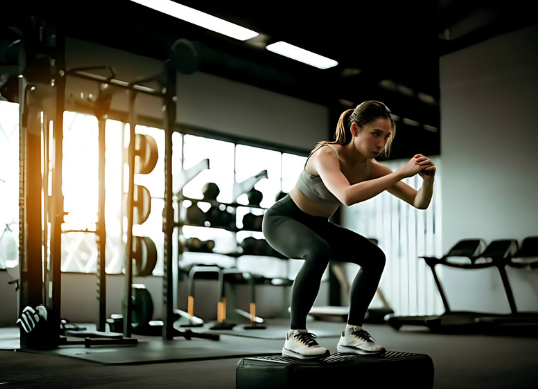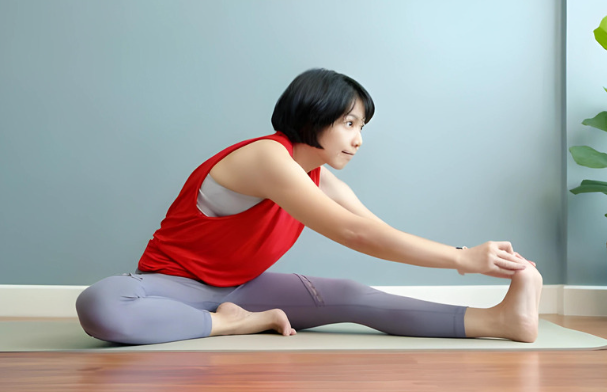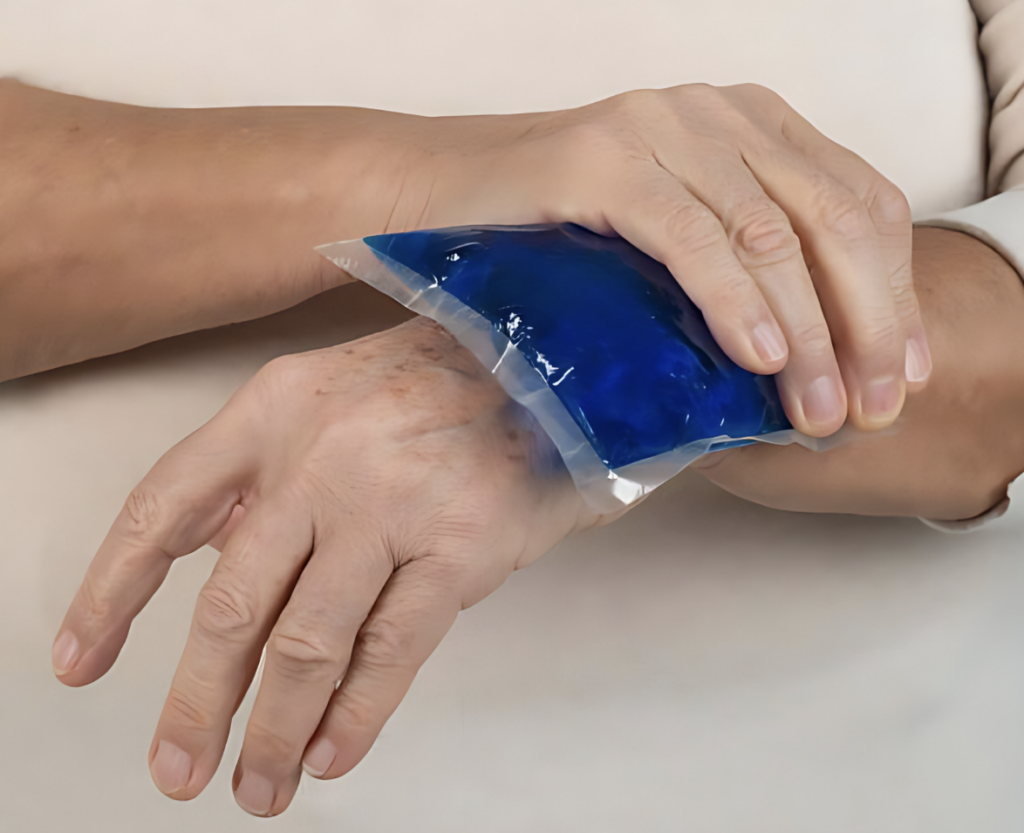Alternative Treatments, Joint Health
What Are Home Remedies for Rheumatoid Arthritis
Rheumatoid arthritis (RA) is a formidable opponent in the field of autoimmune diseases, affecting millions of people around the world with chronic inflammation, joint pain, and systemic symptoms.
While traditional medicines, such as disease-modifying antirheumatic medications (DMARDs) and biologic agents, have dramatically improved management outcomes, patients and healthcare practitioners continue to seek complementary and alternative therapy. Home remedies, rooted in ancient wisdom and developing scientific data, provide a ray of hope for anyone looking to supplement their treatment regimen with natural interventions.
In this detailed article, we will unearth a multitude of home remedies for rheumatoid arthritis, ranging from dietary changes and herbal supplements to mind-body therapy and physical exercises. By digging into the details of each remedy’s mechanism of action and clinical efficacy, we hope to educate people living with RA to make informed decisions regarding their health and well-being. Join us as we explore the terrain of home remedies for rheumatoid arthritis, bridging the gap between mainstream treatment and holistic ways to achieve optimal health and energy.

Understanding the Importance of Exercise for Rheumatoid Arthritis
Exercise emerges as a key component in the treatment of rheumatoid arthritis (RA), providing several benefits that go beyond physical well-being. While physical activity may seem contradictory in the midst of RA’s pain and stiffness, evidence shows that it has a significant influence on symptom relief, joint function preservation, and overall quality of life improvement. However, not all exercises are made equal, and people with RA must traverse a terrain of prescribed activities that are suited to their specific requirements and limits.
In this section of the article, we’ll look at a variety of modest yet effective activities for strengthening muscles, improving flexibility, and relieving joint discomfort. Low-impact aerobics and aquatic therapy, as well as moderate yoga and tai chi, all provide a road to improved mobility, reduced inflammation, and increased energy for people dealing with RA. Join us as we explore the transforming power of specific exercise programs in the comprehensive treatment of rheumatoid arthritis.

Recommended Exercises for Rheumatoid Arthritis
Rheumatoid arthritis (RA) can produce pain and stiffness, making movement unpleasant.
However, maintaining an active lifestyle is essential. Not only is it good for your overall health, but it also helps to strengthen your joints, increase your range of motion, and allow you to participate in activities you enjoy.
When starting an exercise regimen, patients with RA should proceed with caution and strategy. A personalized program, ideally created with the assistance of a physical therapist, can help you protect fragile joints while strengthening surrounding muscles. A well-rounded fitness program should incorporate all of the following elements:
Aerobic Conditioning
Cardiovascular exercises raise heart rate and enhance breathing. This activity boosts cardiovascular health, metabolic control, and stress reduction. RA patients need aerobic training as part of their therapy regimen. RA increases the risk of cardiovascular disease, making aerobic exercise crucial. RA patients should favor low-impact aerobic exercise because high-impact exercises can damage joints.
Swimming, with its low resistance and buoyancy, is a great full-body workout that reduces joint stress. Cycling is another joint-friendly activity that builds cardiovascular endurance and reduces joint strain. Walking is an easy approach to aerobic exercise for people who want it.
RA patients can increase cardiovascular resilience, well-being, and chronic illness management by engaging in these low-impact aerobic activities every day.
Resistance Training
This is a crucial part of holistic rheumatoid arthritis (RA) treatment, preventing muscle weakness and joint instability. RA patients may have decreased mobility and quality of life due to weak muscle caused by sedentary lifestyles and medicines like steroids. RA patients can start resistance training with isometric workouts, which are static muscle contractions without joint movement.
Clasping hands and squeezing arms are gentle but effective ways to activate muscles and stabilize joints while reducing pain and inflammation. Pain management and joint inflammation reduction may allow for more vigorous resistance training. Individual muscle groups can be targeted using free weights and weight machines to increase strength and endurance without straining joints.
Resistance training can help RA patients build strength, joint stability, and resilience against their condition’s physical symptoms.

Stretching and Flexibility Exercises
Rheumatoid arthritis (RA) holistic treatment includes stretching and flexibility exercises to relieve stiffness, maintain joint mobility, and improve functional ability. Healthy joints move fluidly and have a wide range of motion, whereas RA joints often have diminished mobility and flexibility, limiting everyday chores and quality of life. RA patients should stretch every day to overcome these limitations.
Stretching activities improve mobility by reducing stiffness and increasing joint flexibility. RA patients may benefit from mind-body therapies like tai chi and yoga, which combine moderate movements, controlled breathing, and mindfulness. These practices increase physical flexibility, balance, mental calm, and emotional well-being, treating RA’s many difficulties holistically. Stretching and flexibility exercises can help RA patients manage joint stiffness and maintain a healthy lifestyle.
Balance Exercises
RA patients need balance exercises as part of their rehabilitation program because the condition often affects gait and balance, increasing the risk of falling and injuring themselves. RA patients have reduced proprioception, coordination, and muscle strength, making them prone to balance concerns. To address these problems, specialized balance-training programs have become essential for increasing postural stability, fall risk, and functional mobility. Personalized balance-training programs can be created by a physical therapist for each RA patient.
Activities that strengthen core muscles, promote proprioceptive awareness, and improve coordination may be used in these programs. Standing on one leg to develop proprioception and single-leg stance stability and doing dynamic balance tasks like weight transfers and perturbation training are examples. Attention to these exercises can help RA patients establish resilience against balance impairments, strengthen postural control systems, and regain confidence in their ability to handle everyday activities safely and independently.

Using Assistive Devices to Manage Rheumatoid Arthritis Symptoms
With rheumatoid arthritis, you can still be active, look good, and do activities you enjoy. There are gadgets, which your doctor may refer to as “assistive devices“, that can help you restore your independence and simplify daily duties.
Some are specifically intended for persons with illnesses such as RA, making it simpler to bend, reach, and grip. They may be available at a drugstore or medical supply store, or you may look them up online. You may already have others at home.
Dressing and Grooming
Clothes fastener – A button hook at one end makes it easier to attach small buttons to blouses and sweaters. A hook on the opposite end makes it easier to open and close zippers.
Long-handled shoe horn – The long handle makes putting on shoes simpler when bending is difficult. A little notch at the end makes it easier to remove socks.
Long-handled comb – If you have RA, a long handle with a covered grip makes it simpler to comb your hair.
Wash mitt – This mitt, made of terry cloth or mesh, is suitable for use with either body wash or bar soap. You won’t need to grip a washcloth anymore.
In Your Kitchen
Try these items to help with food preparation, cooking, and serving.
Two-handed pots and pans – These are simpler to grip because they have handles on both sides, allowing you to distribute your weight evenly between both hands.
Rocking T-knife – This knife is designed to apply pressure immediately above the food to be cut, requiring less strength and skill. Another advantage is that you can use the knife with one hand.
Milk carton holder – When used with a half-gallon carton, this holder features a plastic handle that makes it easy to hold and pour milk.
Wash mitt – Use the same terry towel or mesh mitt that you use in the shower to make dishwashing and kitchen cleanup easier.
Reacher – This is essentially a long stick (which may scope or fold) with a gripper or suction cup on one end that can increase your reach by 2 or 3 feet. Use it to grab lightweight goods from high cabinet shelves or to pick up items from the floor without bending down.
Other items that can make cooking easier include electric blenders, knives, can openers, and potato peelers. For serving a meal, nothing beats paper plates. Not only are they lighter than regular plates, but you don’t need to clean them.
When You Shop
Reachers – Take yours with you to assist in retrieving products from high store shelves. However, if the item is heavy or breakable, get assistance from a store employee or another customer.
Motorized shopping carts – They can be found in many stores. You can sit while you browse the aisles. If the store does not have them, utilize a shopping cart, even if you only need a few items, to save time and energy. You’ll have something to rely on, too.
Shopping bags – Reusable bags might be gentler on your hands and wrists than plastic supermarket bags. Let the bagger fill them halfway. Slide the sacks over your forearms, leaving your hands free. Cross your arms and keep them close to your body to relieve pressure on your shoulders and elbows.
For Your Car
Driving with RA can be difficult, whether getting in and out of the car or spending time behind the wheel. The following assistive gadgets can improve things slightly:
Key holder – A wide one might make it easy to unlock doors and start the engine. When purchasing a new car, seek for one with keyless entry and ignition.
Beaded Seat Cover – These are available at several auto and medical supply shops. They make it easier to get in and out of your seat and make the ride more comfortable.
Rear and side-view mirrors with a panoramic or broad perspective – If a sore, stiff neck prevents you from turning your head, these simple mirrors can help.
Seatbelt extender – This device connects to your seatbelt, making it easy to grasp, pull, and buckle.
When searching for a new car, seek features that will make driving easier and more comfortable for people with arthritis. Some to consider:
- Leather seats are easier to glide into and out of than upholstered seats.
- Power window and seat controls.
- Heated seats help relieve painful hips and lower backs.
- Running boards make it easy to climb in and out.
- Larger, easier-to-grip steering wheels
For Other Activities and Hobbies
With a little work and creativity, you may identify or create things that will allow you to continue enjoying your favorite hobbies and pastimes. Assistive gadgets can help:
- Kneelers and light hoses for gardening
- Book stands that provide a hands-free reading
- Large, easy-to-hold playing cards, and electric shufflers for card games
- Golf equipment includes automated ball teeing machines and ball retrieval aids
- Lightweight spring-operated scissors for crafts
- Automatic needle threaders for needlework

Modifying Your Home for Rheumatoid Arthritis Relief
Adapting your home does not have to cost thousands of dollars or involve substantial renovations. Small modifications might have a major positive impact on your daily life at home.
Kitchen Modifications
- Cookware: Choose nonstick pans with multiple handles for easier cleaning and lifting, which reduces joint strain.
- Appliance Placement: Keep frequently used appliances at counter height to avoid bending or carrying heavy goods. This small change can greatly lessen joint stress.
- Seating: To reduce joint stress when working in the kitchen, consider sitting on a stool or chair.
- Electric kitchen gadgets: Use electric can openers to make dinner preparation easier.
- Cabinet organization: Install roll-out shelves or a lazy Susan in your cabinets to avoid reaching deep within.
Bathroom Modifications
- Non-Slip Surfaces: To prevent slips and falls, install non-slip mats in the shower, bathtub, and bathroom floor.
- Toilet Seat Height: Consider raising your toilet seat or using a toilet seat attachment for easy access.
- Grab bars: Install these on the walls of the shower and near the toilet to provide assistance while standing or moving.
- Shower Bench: To prevent the risk of falling, keep an adjustable transfer bench next to the bathtub and a shower seat in the shower.
- Electric razors and toothbrushes – These can make it much easier to shave and wash your teeth. You will not need to use your wrists and hands as much, which can help reduce soreness. Furthermore, electronic devices typically have thicker handles that are simpler to grip.
- Easy-open lids – You can change the normal lids on your medication bottles and other bathroom supplies with lids that are easier to open. This can make it much easier to access the items you require without unpleasant twisting motions.
Home-Office Modifications
Assistive devices for your office can make your workday easier. They can help you make calls, write, and sit at your desk without pain.
Supportive chairs
- Supportive chair – This can relieve stress on your joints while working. When you have RA, you may need to adjust the height of your chair and desk to keep your joints comfortable and avoid irritants.
- Hands-free headsets – Holding the phone during calls might put a strain on your hands and wrists. A hands-free headset allows you to make calls without using your hands. This can make your workday a lot more bearable, especially if phone calls are an important part of your employment.
- Writing boards – Slanted writing boards help you feel more connected to your work. They help you to prevent bending and straining. You can also use them to store pens, highlighters, calculators, and other tools easily accessible.
Dietary Changes and Supplements for Rheumatoid Arthritis
It is not possible to cure rheumatoid arthritis (RA) by diet alone; however, making the appropriate food choices can be beneficial in that they can help manage the inflammation that causes havoc in the body, provide the nutrients that your body requires, and assist you in maintaining a healthy weight.
Due to the fact that excess weight puts strain on achy joints and can make certain RA medications less effective, this is an important point to keep in mind. As an additional point of interest, cytokines, which are proteins that induce inflammation, are produced by body fat.
According to a number of studies, those who suffer from rheumatoid arthritis (RA) may consider adopting a Mediterranean diet that is rich in fruits and vegetables, whole grains, and healthy fats.
Here are some meals that you ought to be consuming on a regular basis:
- Fatty fish – Salmon, tuna, sardines, herring, and other cold-water fish contain omega-3 fatty acids, which may help regulate inflammation. Your body requires an appropriate balance of omega-3 and omega-6 fatty acids. Researchers discovered that a higher omega-6 to omega-3 ratio is linked to an increased risk of chronic inflammatory disorders such as RA.
So it is critical to limit omega-6s, which can cause inflammation and are present in meats, certain oils, and fried and processed foods containing those oils while increasing omega-3s. - Fruits and vegetables – Many fruits and vegetables include antioxidants that stabilize free radicals, which can harm cells and cause inflammation. Essential vitamins and minerals and polyphenols may lower C-reactive protein (CRP), an inflammatory marker.
For optimal health, eat a variety of fresh or frozen fruits daily, but beware of frozen sugar. Eat a variety of vegetables for maximum nutrition. Two cups of fruits and two and a half to three cups of vegetables per day, with fewer if you exercise less than 30 minutes and more if you exercise more. - Whole grains – Oats, whole wheat, brown rice, quinoa, and other whole grains may lower CRP levels and minimize the risk of heart disease, both of which are elevated in persons with RA. Whole grains include more minerals and fiber than processed grains.
Furthermore, many items made from refined grains have unhealthy additives like added sugars and saturated fats. Read labels and select breads, cereals, and other products that include whole grains as a key ingredient.

Alternative Therapies for Rheumatoid Arthritis that You Can Do At Home
Massage
This natural approach has been used for thousands of years, and modern science confirms that it can help relieve pain. There are several varieties. You should see your doctor before attempting anything. You can also ask for recommendations. It’s a good idea to choose a massage therapist who has experience working with persons with RA. Let them know if there are any sore locations they should avoid. You can also ask them not to use scented cosmetics that may aggravate your skin.
Heat and Cold
Many doctors offer heat and cold treatments to help with rheumatoid arthritis symptoms. Each provides different benefits:
Cold: It reduces joint swelling and inflammation. Use an ice pack on the affected joint during an RA flare-up, for example. Simply don’t overdo it. Apply a cold compress for 15 minutes at a time. Take at least 30 minutes between treatments.
Heat: It relaxes your muscles and increases blood flow. You can apply a moist heating pad or a warm, damp towel. Many people prefer utilizing microwaveable hot packs. Do not go too hot. Your skin should not burn. You can also apply heat treatment in the shower. Allow the warm water to hit the hurting spot on your body. That could help soothe it. A hot tub is another effective approach to soothe tense muscles. If you have high blood pressure, or heart problems, or are pregnant, use hot tubs or spas sparingly.
Topical creams, Gels, and Patches
You might not think of a pain rub as a natural cure, but many of these products contain capsaicin, the chemical that gives chili peppers their heat. Studies have shown that it can aid with RA discomfort. Do not use it with a heating pad. It increases the risk of burns.

Managing Stress and Emotional Well-being with Rheumatoid Arthritis
Deep breathing
Take belly breaths slowly. It can relax you and block stress receptors that constrict muscles and increase discomfort. By focusing on breathing, you can distract your brain from pain ideas.
Meditation
Simply noticing your inhale and exhale can do this. No spirituality or super-calmness is needed. Anybody can do it, and a few minutes matter. Almost definitely, your thoughts will wander. That’s OK. Refocus on your breath or whatever you want.
Progressive Muscle Relaxation
To do this:
- Tighten and then relax the muscles in various regions of the body.
- Begin with the facial muscles and progress to the neck, arms, chest, back, belly, legs, and feet. Alternatively, start with your feet and work your way up.
- Breathe in while contracting your muscles.
- Breathe out when you let go.
Tai Chi
This slow and gentle martial art is easy on the joints. You’ll stand and perform a series of mild motions that can be modified to accommodate aching joints. It can improve strength, flexibility, and balance. There isn’t enough evidence to say whether it works to relieve RA discomfort, but it’s something to consider.
Visualization
This can relieve stress and pain. Try this basic workout.
- Close your eyes.
- Inhale deeply.
- Imagine yourself in a quiet, peaceful environment.
Yoga
This combination of low-impact exercise, breathing, and meditation originated in India some 5,000 years ago. It benefits both your physical and mental health. It can reduce joint discomfort, increase flexibility, and relieve stress and tension.
Research indicates that it can reduce inflammation and stress hormones. Just check with your doctor to be sure it’s safe for you before diving in. Work with them to find an instructor who understands how to deal with persons who have RA.

Incorporating Self-Care Practices into Your Daily Routine
You play an important part in managing your rheumatoid arthritis (RA). Use these self-care methods to help keep your symptoms under control.
If You Smoke, Quit
Smoking can aggravate RA symptoms and limit remission. It also hinders physical exercise, which is crucial to arthritis treatment. It also raises the risk of RA-related diseases like cardiovascular disease. Ask your primary care doctor about quit-smoking programs and products. Family and friends care about your health and can support you.
Drop Extra Pounds
It may be hard to lose weight. However, fat cells emit inflammatory chemicals. This worsens joint pain and lowers treatment efficacy. Studies show overweight people improve faster than slender folks. Even small weight loss helps. Start with a 10-pound goal. Regular exercise and proper eating are the best ways to reduce weight.
Get and Keep Moving
Physical activity helps almost every facet of RA. Exercise:
- Reduces inflammation.
- Strengthens your bones.
- It’s beneficial for your heart and lungs.
- Relieves discomfort.
- Enhances your mood and sleep.
- Promotes weight loss.
- Keeps the joints mobile.
Exercise will not damage or aggravate your joints. You are not required to undertake solely “gentle” workouts such as tai chi or walking. In reality, few exercises are off-limits to those with arthritis. Aim for 30 minutes of cardio per day and weight training at least twice a week. If you haven’t exercised in a long time, you might want to seek advice from a physical therapist or qualified fitness instructor.
Get Good Sleep
Poor sleep is frequently associated with RA. Pain makes it difficult to fall and stay asleep, while a lack of sleep increases your sensitivity to pain. Tossing and turning can also lead to melancholy and weariness. The majority of sleep issues in patients newly diagnosed with RA are caused by anxiety and uncontrolled RA symptoms.
- Make sure you’re taking your medications as prescribed.
- Avoid coffee later in the day.
- Limit screen time before bedtime.
- Exercise during the day.
If these tips do not work for you, consult your doctor.
Take Care of Your Teeth
Gum problems may cause your RA to progress more quickly than it would otherwise. It can cause more bone and cartilage damage. Make sure you get regular dental exams, eat well, and brush and floss every day. If you are having difficulty taking care of your teeth owing to tight, aching hands, consult your dentist or occupational therapist about strategies to make dental care simpler.
Manage Stress
Stress may cause RA flares. Find healthy stress-management strategies that work for you and your lifestyle. This can be whatever makes you feel relaxed.
- Meditate.
- Practice yoga.
- Take a walk in nature.
- Spend time with your pet.
- Listen to music.
Disclaimer: Please note that Discoverybody has taken great care to ensure that all information provided is comprehensive and up to date. However, you should not use this article as a substitute for the expertise that a licensed healthcare professional can offer. It’s always a good idea to talk to your doctor before taking any medication.
Sources Expanded
- I. (2023, September 20). Adapting Your House When You Have Rheumatoid Arthritis. Altus Biologics. https://altusbiologics.com/adapting-your-house-when-you-have-rheumatoid-arthritis/
- Devices to Make Your Daily Life Easier With RA. (2010, November 23). WebMD. https://www.webmd.com/rheumatoid-arthritis/ra-assistive-devices
- Srakocic, S. (2022, March 15). Assistive Devices for Rheumatoid Arthritis. Healthline. https://www.healthline.com/health/rheumatoid-arthritis/assistive-devices-for-rheumatoid-arthritis#lifestyle
- Exercise can ease rheumatoid arthritis pain. (2023, May 5). Harvard Health. https://www.health.harvard.edu/pain/exercise-can-ease-rheumatoid-arthritis-pain
- Bennington-Castro, J. (2022, July 12). Rheumatoid Arthritis Home Remedies and Alternative Treatments. EverydayHealth.com. https://www.everydayhealth.com/rheumatoid-arthritis/guide/home-remedies/
- Clinic, C. (2024, March 19). Natural Remedies for Rheumatoid Arthritis. Cleveland Clinic. https://health.clevelandclinic.org/rheumatoid-arthritis-natural-remedies
- Elliott, N. (2023, April 27). 7 Natural Remedies For Rheumatoid Arthritis GlobalRPH. GlobalRPH. https://globalrph.com/2023/04/7-natural-remedies-for-rheumatoid-arthritis/
- Best Foods for Rheumatoid Arthritis | Arthritis Foundation. (n.d.). https://www.arthritis.org/health-wellness/treatment/treatment-plan/tracking-your-health/foods-that-can-help-ra-symptoms
- 6 Self-Care Tips for RA. (n.d.). https://www.arthritis.org/diseases/more-about/6-self-care-tips-for-ra
Trusted Health, Wellness, and Medical advice for your well-being



